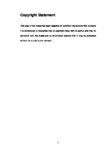A study of immune responses during antiviral treatment for hepatitis C virus infection
| dc.contributor.supervisor | Ahmed, Asma | |
| dc.contributor.author | Ahmed, Asma | |
| dc.contributor.other | Faculty of Health | en_US |
| dc.date.accessioned | 2020-06-19T13:44:49Z | |
| dc.date.available | 2020-06-19T13:44:49Z | |
| dc.date.issued | 2020 | |
| dc.identifier | 10509071 | en_US |
| dc.identifier.uri | http://hdl.handle.net/10026.1/15774 | |
| dc.description.abstract |
Hepatitis C virus (HCV) is an RNA virus that primarily infects the liver, affecting 70 million people worldwide, according to new estimates (Polaris Observatory HCV Collaborators., 2017). Only 15-25% of persons infected with HCV will spontaneously clear the infection with the remaining developing chronic infection. Chronic hepatitis C often results in progression to liver fibrosis and ultimately cirrhosis, with risk of developing liver failure and hepatocellular carcinoma (HCC). As a consequence, HCV is the most common indication for liver transplantation in developed countries. Chronic hepatitis C infection is characterised by a failure of HCV specific T cell responses caused by viral escape and T cell exhaustion considered to be mediated by constant antigen stimulation. Hepatitis C virus has developed strategies to escape innate immune responses leading to chronic infection in the face of ongoing innate immune activity. HCV protease NS3/4A and NS5A efficiently cleaves signalling molecules involved in pathways following activation of toll-like receptors and RIG-I by viral PAMPs to induce Interferons. HCV proteins also block signalling pathways initiated by endogenous interferon. Interferon stimulated genes induced despite these viral evasion mechanisms remain ineffective in viral clearance. These mechanisms lead to viral persistence in chronic hepatitis C infection. Interferon based antiviral therapies failed to recover HCV specific CD8+ T cell function suggesting that the damage to T cells may be permanent even after antigen removal. Chronically infected patients show poor response to treatment with pegylated interferon- and ribavirin, particularly in the presence of endogenously activated innate immune pathways which are poorly responsive to exogenous interferon-. The standard of treatment for chronic HCV has seen an extraordinary phase of development in recent years with new direct acting antiviral drugs achieving cure rates of over 96%. However, the role of adaptive and innate immune responses in preventing relapse, sustaining viral response and the nature and extent of immune restoration that occurs with interferon free treatment regimens remains to be defined. This thesis sets out work to analyse the impact of direct inhibition of ongoing viral replication by interferon-free therapy including direct acting antiviral agents on expression of T cell exhaustion markers and function of HCV specific T cells amongst treatment relapsers and responders. Understanding these mechanisms will determine their role in treatment outcomes and preventing viral relapse post treatment. Expression of T cell exhaustion markers, Programmed cell death protein – 1 (PD-1) and Galectin-9, on T cells was studied using flow cytometry and demonstrated restoration of T cell phenotype following sustained viral response. Further work established a difference in PD-1 and Galectin 9 expression on CD8+ and CD4+ T cells between treatment relapsers and responders. The functional effect of these findings was further confirmed by HCV specific T cell reactivity against HCV overlapping peptides using IFN- ELISpot assays, demonstrating the restoration of HCV specific T cell function following successful viral clearance. There was a distinct difference in baseline ELISpot responses between treatment responders and relapsers, showing a rapid reduction in ELISpot responses at week 2 in relapsers with early augmentation in T cell reactivity in treatment responders. These findings may predict cases which are likely to relapse, thereby guiding duration of treatment. To investigate innate immune responses, cytokine response to synthetic TLR and RIG-I ligands in a cohort of patients with sustained viral response was studied. There was an increase in the secretion of pro-inflammatory cytokines very early at treatment week 2 in the absence of synthetic TLR receptor ligands amongst treatment responders suggesting restoration of cytokine responses by use of direct acting antiviral agents, which may contribute towards viral clearance in addition to direct viral replication inhibition. This study also demonstrated at least partial restoration of innate immune responses after successful treatment of chronic HCV with interferon-free therapy shown by increase in secretion of a range of pro-inflammatory cytokines using TLR7/8 and RIG-I ligands 4 weeks after successful antiviral treatment. Overall, studies described in this thesis demonstrate both innate and adaptive immune restoration with treatment regimens not including interferon alpha and distinct early differences in treatment relapsers and responders, which may be predictive of viral clearance. | en_US |
| dc.language.iso | en | |
| dc.publisher | University of Plymouth | |
| dc.subject | Hepatitis C virus | en_US |
| dc.subject | HCV | en_US |
| dc.subject | antiviral treatment | en_US |
| dc.subject | Immune response | en_US |
| dc.subject | Elispot | en_US |
| dc.subject | T cell exhaustion | en_US |
| dc.subject | Innate immunity | en_US |
| dc.subject.classification | Other (e.g., MD, EdD, DBA, DClinPsy) | en_US |
| dc.title | A study of immune responses during antiviral treatment for hepatitis C virus infection | en_US |
| dc.type | Thesis | |
| plymouth.version | publishable | en_US |
| dc.identifier.doi | http://dx.doi.org/10.24382/470 | |
| dc.rights.embargoperiod | No embargo | en_US |
| dc.type.qualification | Doctorate | en_US |
| rioxxterms.version | NA |
Files in this item
This item appears in the following Collection(s)
-
01 Research Theses Main Collection
Research Theses Main


